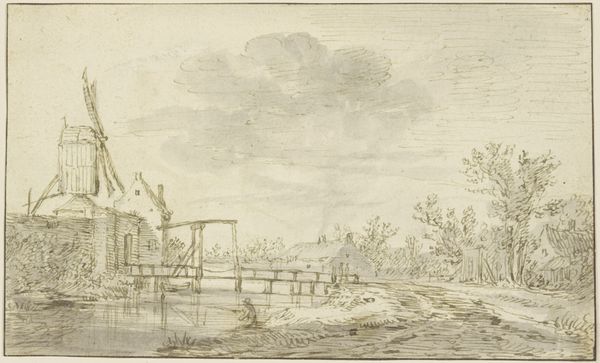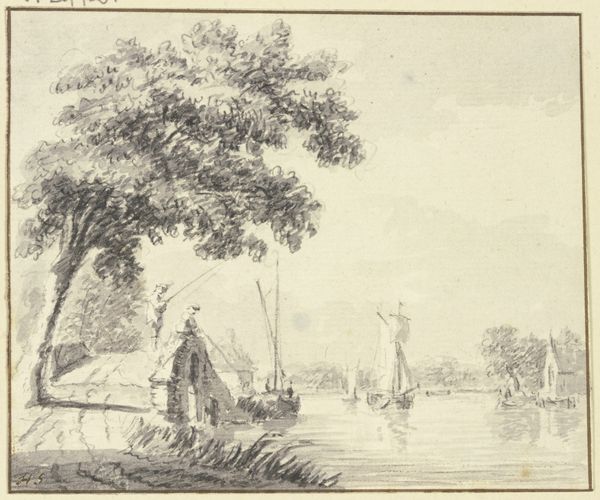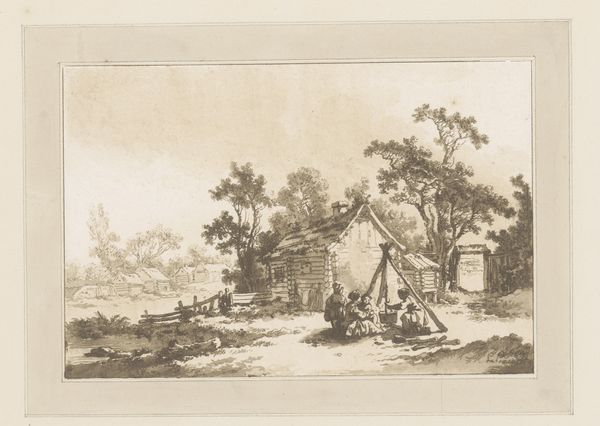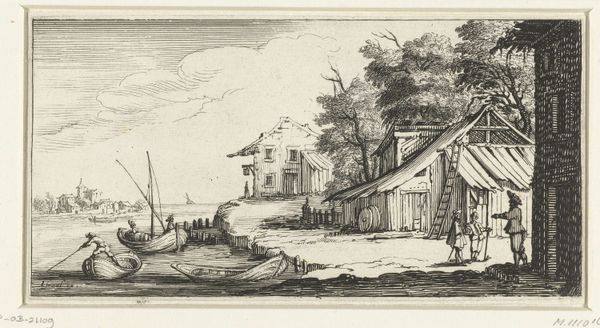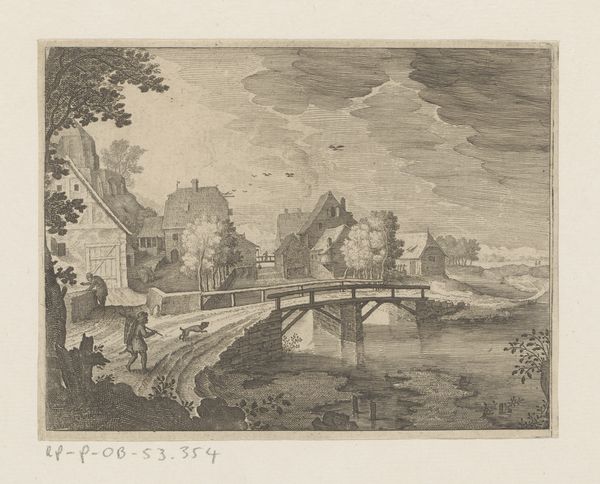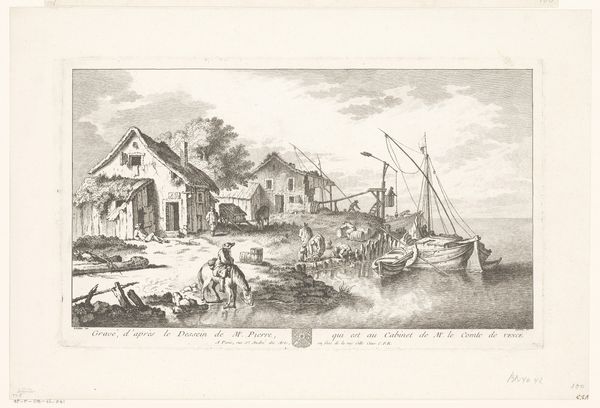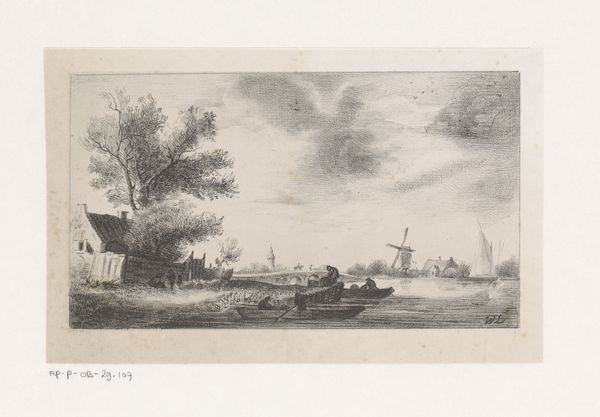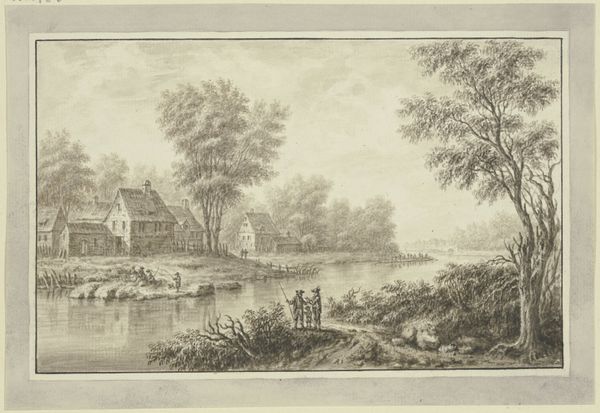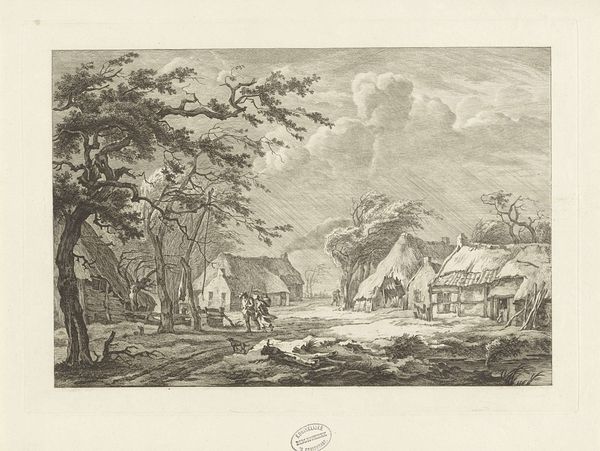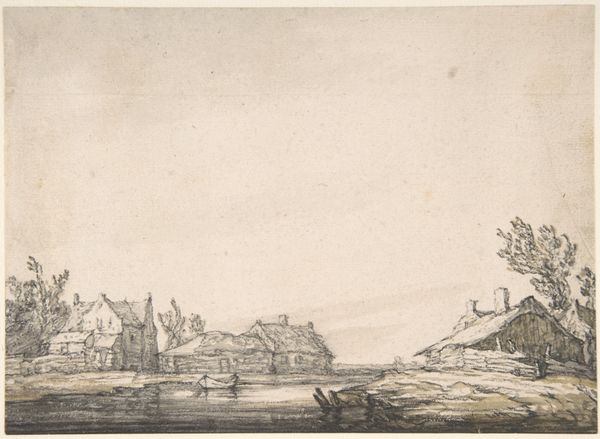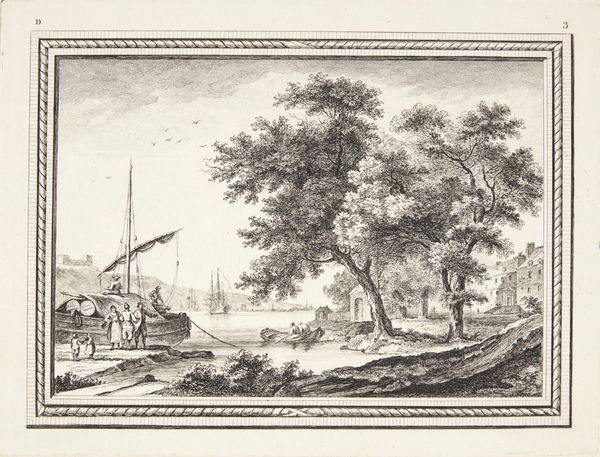
drawing, paper, ink
#
drawing
#
dutch-golden-age
#
landscape
#
paper
#
ink
#
genre-painting
Dimensions: height 137 mm, width 180 mm
Copyright: Rijks Museum: Open Domain
Aarnout ter Himpel rendered this drawing in the 17th century using pen in gray ink. Notice the bridge, a motif rich with symbolism. It's more than just a way to cross water; it signifies transition, connection, and the journey from one state to another. Consider the Roman Pontifex Maximus, the "greatest bridge-builder," a title later adopted by the Pope. It underscores the bridge's role as a connector between the earthly and divine realms. The presence of a mill connects back to Don Quixote's misguided battle against windmills, these structures become symbolic of the futility of man versus nature. It also represents prosperity, given that it's usually used to grind grains. Here, the bridge and windmill evoke our subconscious understanding of transition and prosperity, engaging us in a silent dialogue that transcends centuries. The enduring power of these symbols lies in their ability to tap into our collective memory, constantly evolving yet eternally relevant.
Comments
No comments
Be the first to comment and join the conversation on the ultimate creative platform.
